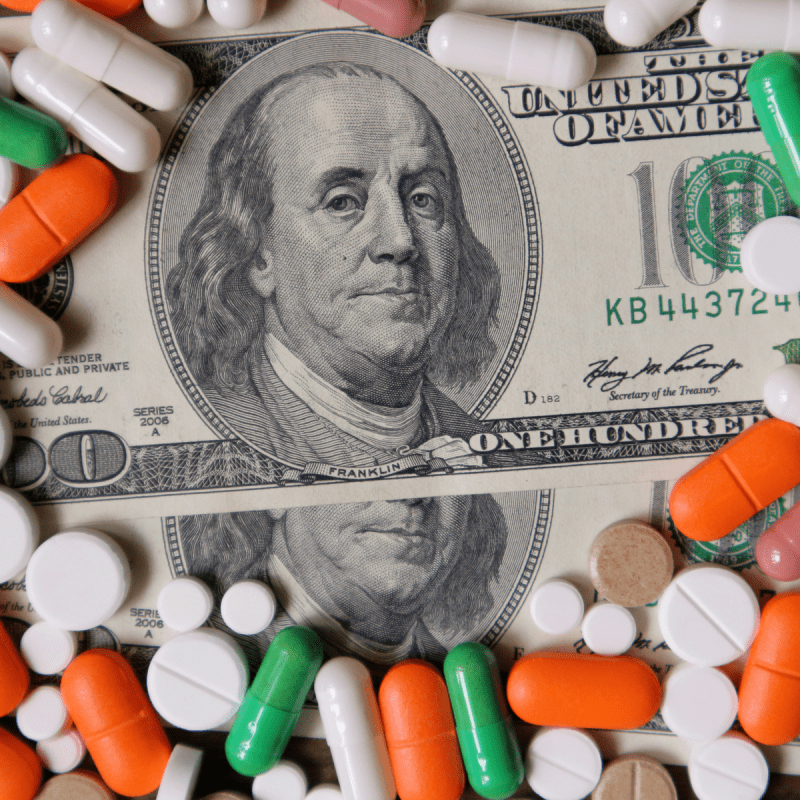
There is a common truth: Prescription drugs are expensive; especially if you can rub it on your skin (topicals), inhale it, or inject the drug (think insulin and epi-pens). Fortunately, medicines are very effective as well and there are a lot of factors that go into this pricing. The most common is the drug formulary, or the list that works with your insurance company. We have all heard the “Tiers” — Tier 1 to Tier “arm-and-a-leg,” that most formularies have. Tier 1 is the least expensive and it goes up from there.
Videos by TravelAwaits
We all find ourselves begging the Rx gods, “please be Tier 1!” when we get a new prescription. The fact of the matter is that when your doctor hands you that new prescription, you have no idea what it is going to cost. It is always terrible when you have been waiting in line for a prescription and the clerk says, “That will be $300,” upon which you then must buy the smelling salts used to wake you up from when you fainted.
Well, I have good news. You can put those salts away because I am going to give you some very helpful suggestions to avoid this situation and get the meds you need without the huge price tag.
Savings Cards And Apps
The easiest to use and easiest to access are the savings cards and apps. There are several services out there with free prescription discount services. You simply go to the website and enter your prescription information. Then, see the pricing and discount availability for local pharmacies. Print out the coupon or use the app to get those discounts. In several instances, these sites can even be less expensive than your insurance provider. Lots of plans have copays and Tier 3 drugs can be around $150 for that copay.
Let’s look at Latisse, a topical solution that helps regrow eyelashes. My current plan has a $150 copay for Tier 3 medications, but when I look at a Tier 3 medication on GoodRx.com, it is only $59 and only $41 at WellRx.com. At around $100 in savings per month, this is a good start. Personally, I search every drug my family may need to get the best deals on prescriptions. WellRx.com will also show you if there are any potential reactions between the drugs you are currently taking; just an extra bonus.
Direct Mail
This is my personal favorite, mainly because it arrives directly at my house and I don’t have to go to the pharmacy. Part D programs with Medicare will have significant discounts on 90-day supplies and usually no copays for mail order generics. The other major benefit is that these programs can be the most cost effective if you are using generics for your maintenance drugs. Programs like Dirxhealth.com are non-Medicare, non-Part D programs that can help you get access to mail order generics without insurance coverage at all.
Manufacturer Assistance Programs
If you have an active health insurance policy and you find that your medicine is expensive, the best option is usually the drug manufacturer themselves. A lot of them have great options to get your medicine very cheap, if not free. They usually have some criteria that needs to be met to receive assistance, but if you can, they have the least expensive options.
Copay Cards
A lot of manufacturers offer a range of copay cards. You can usually apply for these as long as you have a non-Medicare health insurance policy. Copay cards can be found on the specific drug’s website. Copays range from $0–$25 for prescriptions, which is great because most of these drugs have a price tag of $300 per month. The only major drawback is that any government-assisted programs, like Medicare or Medicaid, are not eligible for these copay cards. The good news is that the next option will help.
Financial Assistance
If the manufacturer doesn’t have a copay card available, then they will most definitely have an assistance program. Many have assistance for several levels of financial need. Most of these programs simply have an application that you have to send in to determine your financial need. A majority of these programs can be found at the specific drug’s website or AAFA.org. If these programs are not able to assist with your Medicare, the following options are best.
Government Assistance Programs
The best news is that almost everything that governs Medicare is in place to help the customer and not the provider. There are a lot of programs out there that can help you if the manufacturer cannot. These programs can also increase the flexibility of your Medicare policy, letting you change your policy if it can help you receive better coverage.
Extra Help
This program is administered by the Social Security Administration (SSA) and can dramatically reduce your prescription costs. To qualify, you must have limited income and resources. In most cases, this may not work if you have a Medicare Supplement or Medigap plan. To apply for extra help, visit the SSA’s website.
Medicaid
If you are eligible for Medicaid, you can also get assistance. It really depends on the level of Medicare you receive that determines the prices of your medications. Typically, it is a combination of several programs that help with state systems. The less access to resources and income you have, the more assistance you will get. In some extreme situations, the program will also pay for your Part B premium. Apply at your state’s Medicaid website. Listings can be found at Medicaid.gov.
Samples
If you have a situation where none of these options are working. Heck! It never hurts to ask your doctor for samples. If your doctor is prescribing a more expensive drug, they probably have access to samples or can ask for them from the manufacturer. This is not a permanent solution, but it can significantly reduce your overall cost.
In addition to all these options, there are a host of non-profit organizations that are out there to assist, especially for specific conditions, like asthma, diabetes, heart disease, etc. All in all, there are a lot of assistance programs to assist you and help you get the cost of your medications to a reasonable area. I suggest getting in touch with your broker or agent to go over your options and assistance, or checking out these websites for your specific condition:
- Asthma: AAFA.org
- Crohn’s Disease: crohnscolitisfoundation.org
- American Diabetes Association: diabetes.org
- American Cancer Society: Cancer.org
For more healthcare advice, check out these stories:
